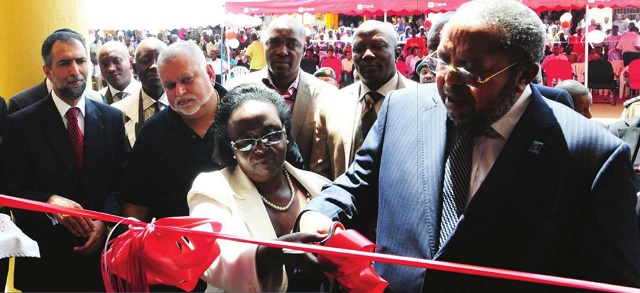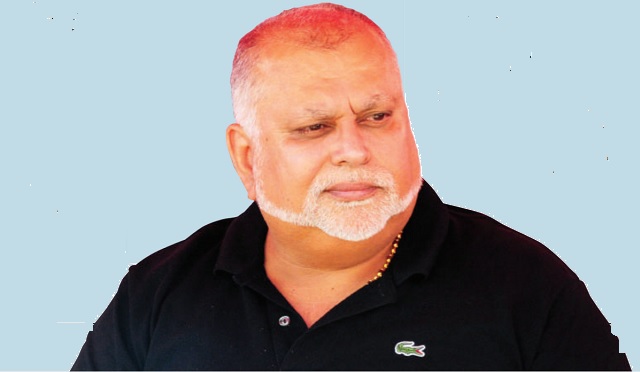
ANALYSIS: Why President Yoweri Museveni’s behind- the-scenes-maneuvers to save Sudhir’s bank hit a snag
On Oct.10, President Yoweri Museveni directed the Prime Minister Dr. Ruhakana Rugunda to find an immediate solution to Crane Bank’s problems with the Bank of Uganda (BoU). Apparently, this was expected to mark an end a three-month impasse between BoU, the regulator of the financial services sector, and Sudhir Ruparelia, the proprietor of Crane Bank. After a series of other frantic high-level meetings to save the bank, BoU eventually took statutory management of the embattled bank on Oct.20. An investigation by The Independent unravels how the behind the scenes maneuvers to save Uganda’s 4th largest bank by assets hit a dead end.
At the beginning of October, Crane Bank’s “failing performance” started to emerge in the public domain. Then reports of how it was due for sale to an undisclosed investor hit the headlines. As word was making the rounds, behind the scenes were frantic moves by the government to save Uganda’s fourth biggest bank by asset base.
With a non-performing loan book of Shs 142.3 billion in 2015 up from just under Shs 19.3 billion in 2014, it was clear that something was amiss at the bank. As a result, negotiations with the Central bank were set in motion. BoU demanded that the shareholders recapitalize by $25 million after its capital ratio had fallen far below the Central bank capital reserve requirement.
As the negotiations intensified, the Central bank demanded that Sudhir Ruparelia, the Crane Bank majority shareholder, injects $10 million (about Shs 34 billion) into the bank.
Sudhir told the Central bank that he couldn’t raise the cash. Instead, he requested that the Central bank lends him the money. At first, the Central bank could hear none of it. But when the situation deteriorated, BoU agreed to lend Sudhir some money but on condition that he presents security for the cash.
Sudhir was willing to stake all the buildings housing the 46 branches of Crane Bank as collateral. These, he said, were valued at $70 million (about Shs 238 billion). BoU said, ‘no thanks.’ They didn’t want those buildings, citing a dispute over their true ownership. The alternative Sudhir had was the posh Kampala Boulevad, one of Sudhir’s newest additions to his multi-million dollar property portfolio. Additionally, he was willing to stake some $23 million worth of equity, which he holds on the Uganda Securities Exchange.
Still, the Central bank bosses were not satisfied with the collateral being offered. Sources told The Independent that the BoU chiefs felt that Sudhir had more to put on the table than these properties. Sudhir said he was willing to add Kampala boulevard, which he said was valued at $ 20 million. He had also said he was will to stake about $23 million (about Shs 78 billion) worth of equity on the Uganda Securities Exchange. The Central bank bosses didn’t want that either. They believed that Sudhir had the cash. Uganda’s biggest property owner owns over 20 top properties through his company, Meera Investments Ltd, all of which is valued at about $1.9 billion.

They also know that Sudhir earns about $2.5 million every month from these properties. If he was serious about saving his bank, Central bank officials and others in government felt that Sudhir could freeze construction of new properties for a year to raise money to save his bank.
Three months earlier in July – probably as a measure to put more pressure on the bank’s wealthy owners to inject in more capital, BoU had issued instructions to Crane Bank management to stop giving new loans, overdrafts, bank guarantees, letters of credit, credit cards and bid bonds.
Crane Bank’s problems stemmed from a huge burden of non-performing loans in 2015. Apparently, when a debtor fails to make any payments to service the loan as par the loan contract within 60 days, BoU categorises it as ‘doubtful’ and the Central bank demands that the shareholders pay up 20% of the loan value from their own funds or it is deducted from the capital reserve.
After 90 days without making any payments on the loan, the bank is issued with a warning by the Central bank to pay 50% or the BoU deducts it from the capital reserves.
When 12 months elapse without a repayment being made to service the loan as as par the loan agreement, the BoU asks the shareholders to pay the full amount or it is chopped off from the capital reserves in it’s custody.
This is the ugly situation Crane Bank found itself in after 80%-90% of its bad loans from six of its top borrowers eroded its capital reserve and balance sheet.
Being stopped from transacting essentially meant that the bank could not make any revenue apart from the usual bank charges on customer transactions, yet the overhead costs such as salaries, utilities etc kept piling up.
As a result, a bank, which had been earning a monthly profit of Shs 6 billion, was now struggling to meet its minimum costs.
Consequently, as they could not get the services they needed, some of the business customers began withdrawing their money and walking away to other commercial banks that were offering those essential products. As a result, in the three months up to October, the bank had lost Shs 300 billion of deposits. By Oct.10, the bank was in the middle of a debilitating liquidity crisis.
The BoU bosses had hoped that the stringent actions would force the shareholders into desperation to look for the cash to recapitalise the bank. Sudhir had flown to Dubai where he had a house and sold it for $5 million. He re-invested the money in Crane Bank. But it was not good enough; the BoU guys wanted more. Sudhir was obviously furious over how he was being treated. That is all he could risk to save the bank. He decided to appeal to the higher powers.
 The Independent Uganda: You get the Truth we Pay the Price
The Independent Uganda: You get the Truth we Pay the Price



It`s a pity. failure like this is ususallly never down to only 1 reason, but to a number of reasons that present themselves in quick succession. It was a beacon to indigenous banking.
This is sad but we believe God for much better in the banking sector and an elevation in our economy.